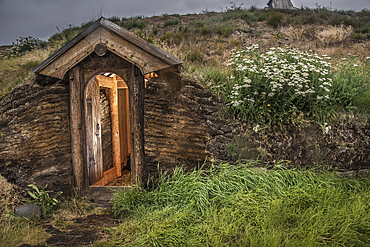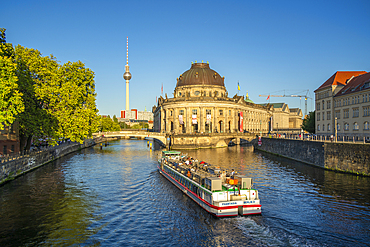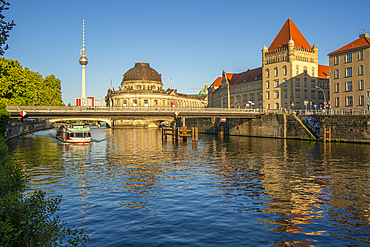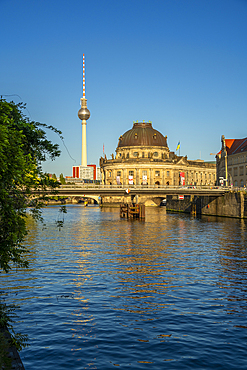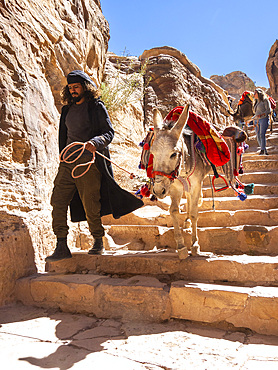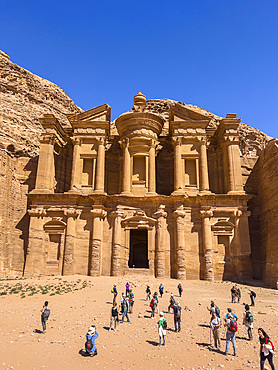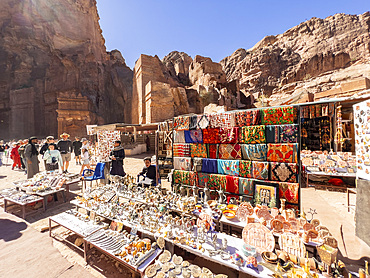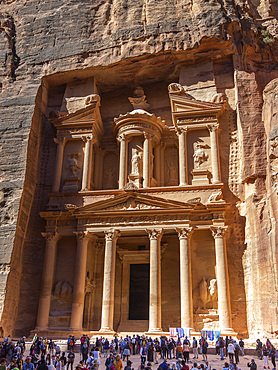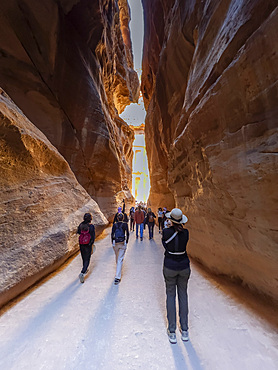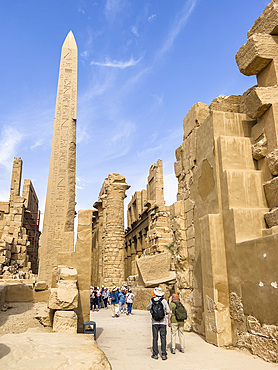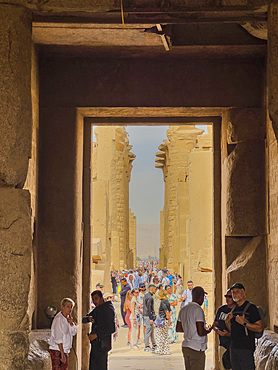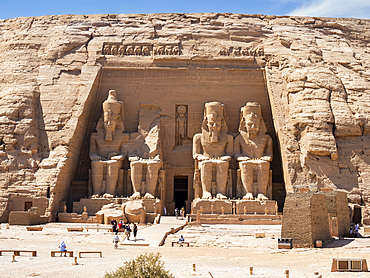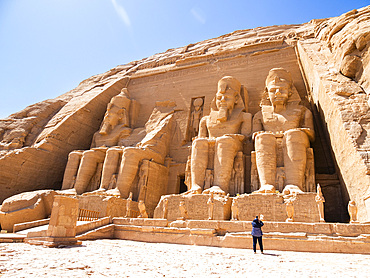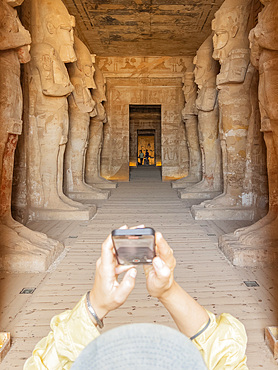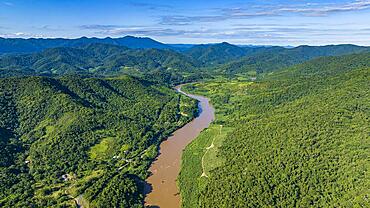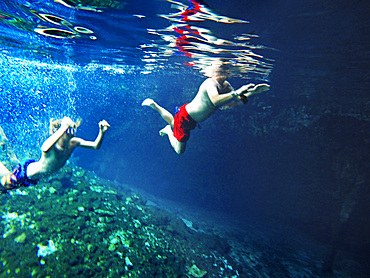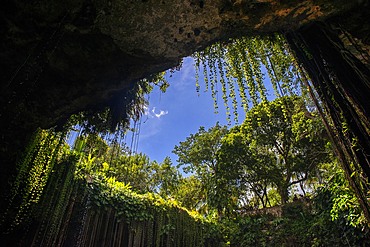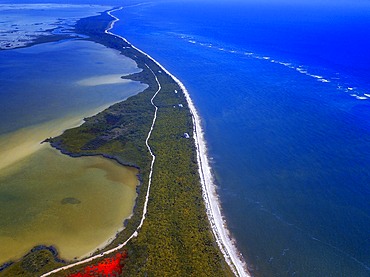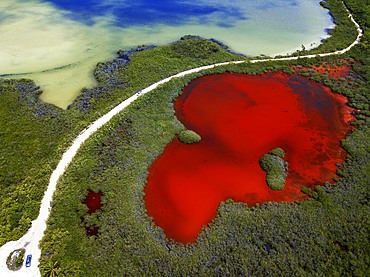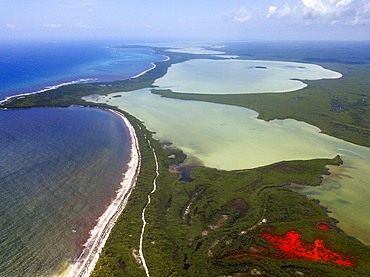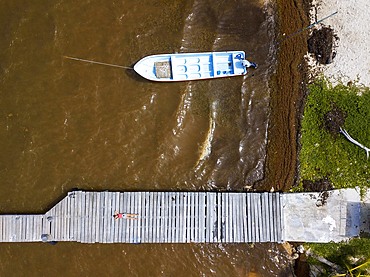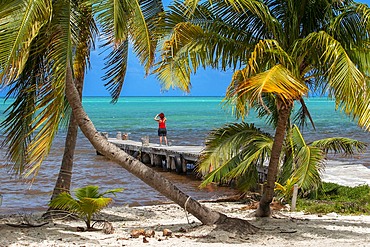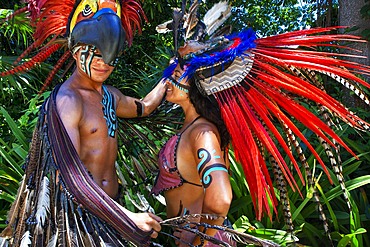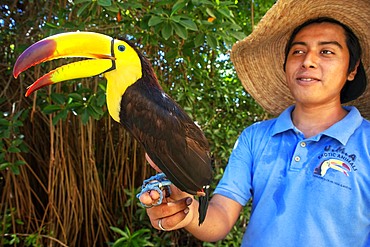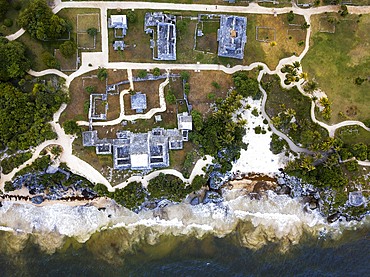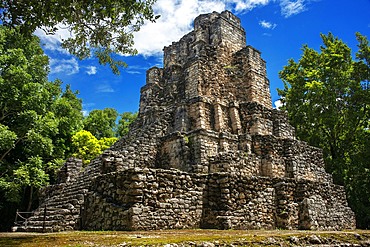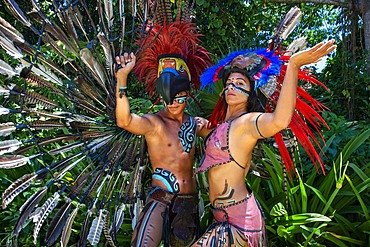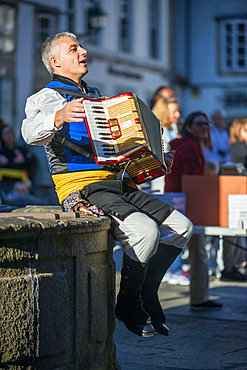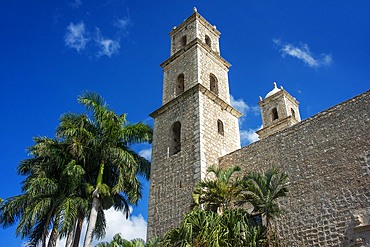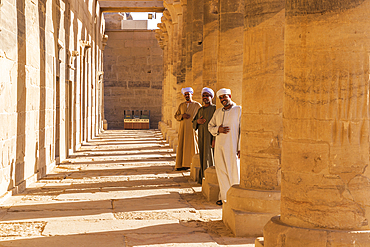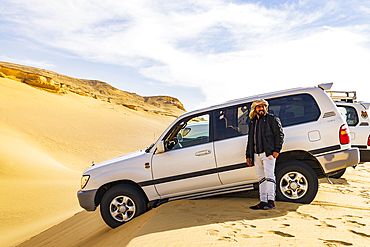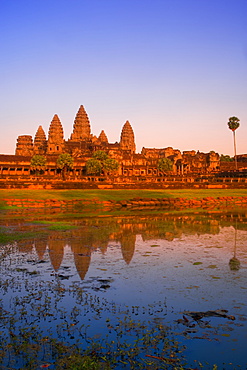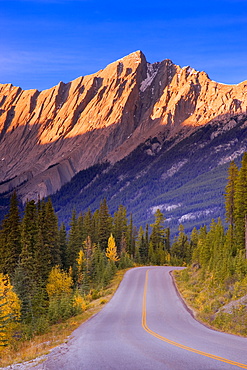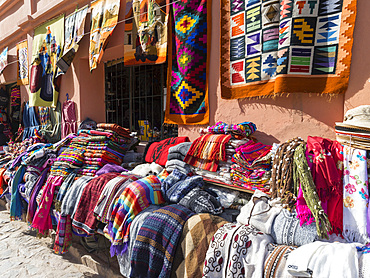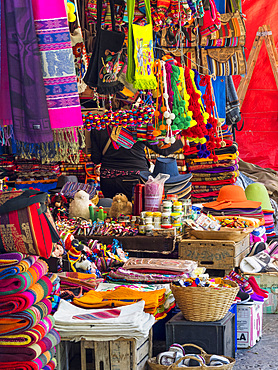Recent searches
Loading...
1116-52775 - Stone and turf structure with wooden doorway at the recreated longhouse in Greenland's Brattahlid, Eriksfjord area, part of a reconstruction of Erik the Red's settlement, Kujataa World Heritage Site, Qassiarsuk, Southern Greenland, Greenland
1116-52774 - Wooden arches and building of the recreated Tjodhilde Church in Greenland's Brattahlid, Eriksfjord area, part of a reconstruction of Erik the Red's settlement, Kujataa World Heritage Site, Qassiarsuk, Southern Greenland, Greenland
844-30937 - View of River Spree and Bode Museum, Museum Island, UNESCO World Heritage Site, Berlin Mitte district, Berlin, Germany, Europe
844-30936 - View of River Spree and Bode Museum, Museum Island, UNESCO World Heritage Site, Berlin Mitte district, Berlin, Germany, Europe
844-30935 - View of River Spree and Bode Museum, Museum Island, UNESCO World Heritage Site, Berlin Mitte district, Berlin, Germany, Europe
844-30932 - View of River Spree and Bode Museum, Museum Island, UNESCO World Heritage Site, Berlin Mitte district, Berlin, Germany, Europe
1112-8012 - The Petra Monastery (Al Dayr), Petra Archaeological Park, UNESCO World Heritage Site, one of the New Seven Wonders of the World, Petra, Jordan, Middle East
1112-8008 - The Petra Treasury (Al-Khazneh), Petra Archaeological Park, UNESCO World Heritage Site, one of the New Seven Wonders of the World, Petra, Jordan, Middle East
1112-8004 - The Siq, entrance to Petra Archaeological Park, UNESCO World Heritage Site, one of the New Seven Wonders of the World, Petra, Jordan, Middle East
1112-8002 - The Petra Treasury (Al-Khazneh), Petra Archaeological Park, UNESCO World Heritage Site, one of the New Seven Wonders of the World, Petra, Jordan, Middle East
1112-8003 - The Siq, entrance to Petra Archaeological Park, UNESCO World Heritage Site, one of the New Seven Wonders of the World, Petra, Jordan, Middle East
1112-7975 - The Petra Monastery (Al Dayr), Petra Archaeological Park, UNESCO World Heritage Site, one of the New Seven Wonders of the World, Petra, Jordan, Middle East
1112-7973 - Donkeys, guide and tourists on the path to The Petra Monastery (Al Dayr), Petra Archaeological Park, UNESCO World Heritage Site, one of the New Seven Wonders of the World, Petra, Jordan, Middle East
1112-7972 - Donkeys on the path to The Petra Monastery (Al Dayr), Petra Archaeological Park, UNESCO World Heritage Site, one of the New Seven Wonders of the World, Petra, Jordan, Middle East
1112-7958 - The Petra Monastery (Al Dayr), Petra Archaeological Park, UNESCO World Heritage Site, one of the New Seven Wonders of the World, Petra, Jordan, Middle East
1112-7937 - The Petra Treasury (Al-Khazneh), Petra Archaeological Park, UNESCO World Heritage Site, one of the New Seven Wonders of the World, Petra, Jordan, Middle East
1112-7931 - The Petra Treasury (Al-Khazneh), Petra Archaeological Park, UNESCO World Heritage Site, one of the New Seven Wonders of the World, Petra, Jordan, Middle East
1112-7924 - Souvenir stalls at the Street of Facades, Petra Archaeological Park, UNESCO World Heritage Site, one of the New Seven Wonders of the World, Petra, Jordan, Middle East
1112-7925 - The Petra Treasury (Al-Khazneh), Petra Archaeological Park, UNESCO World Heritage Site, one of the New Seven Wonders of the World, Petra, Jordan, Middle East
1112-7918 - A boy with a camel, the Petra Treasury (Al-Khazneh), Petra Archaeological Park, UNESCO World Heritage Site, one of the New Seven Wonders of the World, Petra, Jordan, Middle East
1112-7911 - The Siq, entrance to Petra Archaeological Park, UNESCO World Heritage Site, one of the New Seven Wonders of the World, Petra, Jordan, Middle East
1112-7868 - Obelisk of Thutmosis I, Karnak Temple Complex, a vast mix of temples, pylons, and chapels, UNESCO World Heritage Site, near Luxor, Thebes, Egypt, North Africa, Africa
1112-7849 - The Great Hypostyle Hall, Karnak Temple Complex, a vast mix of temples, pylons, and chapels, UNESCO World Heritage Site, near Luxor, Thebes, Egypt, North Africa, Africa
1112-7830 - Panoramic view of the Great Pyramid of Giza, the oldest of the Seven Wonders of the World, UNESCO World Heritage Site, Giza, Cairo, Egypt, North Africa
1112-7728 - Columns at the Philae temple complex, The Temple of Isis, UNESCO World Heritage Site, currently on the island of Agilkia, Egypt, North Africa, Africa
685-2738 - Mezquita Mosque Cathedral, UNESCO World Heritage Site, Cordoba, Andalusia, Spain, Europe
685-2770 - Schonbrunn Palace, UNESCO World Heritage Site, Salzburg, Austria, Europe
1112-7709 - The Great Temple of Abu Simbel with its four iconic 20 meter tall seated colossal statues of Ramses II (Ramses The Great), UNESCO World Heritage Site, Abu Simbel, Egypt, North Africa, Africa
1112-7704 - The Great Temple of Abu Simbel with its four iconic 20 meter tall seated colossal statues of Ramses II (Ramses The Great), UNESCO World Heritage Site, Abu Simbel, Egypt, North Africa, Africa
1112-7698 - The temple of Hathor and Nefertari (The Small Temple of Abu Simbel), UNESCO World Heritage Site, Abu Simbel, Egypt, North Africa, Africa
1112-7697 - The Great Temple of Abu Simbel with its four iconic 20 meter tall seated colossal statues of Ramses II (Ramses The Great), UNESCO World Heritage Site, Abu Simbel, Egypt, North Africa, Africa
1112-7680 - Interior view of the Great Temple of Abu Simbel with its successively smaller chambers leading to the sanctuary, UNESCO World Heritage Site, Abu Simbel, Egypt, North Africa, Africa
1112-7677 - Tourist on a camel ride in front of the Great Pyramid of Giza, the oldest of the Seven Wonders of the World, UNESCO World Heritage Site, near Cairo, Egypt, North Africa, Africa
1112-7674 - Tourists on camel ride in front of the Great Pyramid of Giza, the oldest of the Seven Wonders of the World, UNESCO World Heritage Site, Giza, near Cairo, Egypt, North Africa, Africa
1112-7667 - Tourists visiting the Great Sphinx and Pyramid, in the Giza Complex, UNESCO World Heritage Site, Giza, outside Cairo, Egypt, North Africa, Africa
832-400873 - Aerial of the Iguape river, Unesco site Atlantic Forest South-East Reserves, Alto Ribeira Touristic State Park, Sao Paulo state, Brazil, South America
832-400871 - Aerial of the Iguape river, Unesco site Atlantic Forest South-East Reserves, Alto Ribeira Touristic State Park, Sao Paulo state, Brazil, South America
832-400872 - Aerial of the Iguape river, Unesco site Atlantic Forest South-East Reserves, Alto Ribeira Touristic State Park, Sao Paulo state, Brazil, South America
832-398406 - Plitvice Lakes National Park, tourists on wooden walkway, waterfalls between the lower lakes, UNESCO World Heritage Site, Croatia, Europe
1366-436 - Agilkia Island, Aswan, Egypt. Ruins of Philae Temple, a UNESCO World Heritage Site.
1350-6478 - Aerial view of the Levante beach and the skyline by night. Benidorm. Alicante. Valencia Community. Spain
1350-6636 - Aerial view of Mayan Ruin of Chichen Itza Archaeological Site Yucatan Peninsula, Quintana Roo, Caribbean Coast, Mexico
1350-6635 - Aerial view of Mayan Ruin of Chichen Itza Archaeological Site Yucatan Peninsula, Quintana Roo, Caribbean Coast, Mexico
1350-6630 - Swimming at Cenote Ik Kil in Yucatan, Mexico, a natural pit, or sinkhole near Chichen Itza. Yucatan Peninsula, Quintana Roo, Mexico. Ik Kil was sacred to the Mayans who used this cenote for both relaxation and ritual services centuries ago.
1350-6633 - Gran Cenote de Tulum in Yucatan Peninsula, Quintana Roo, Mexico. There are thousands of cenotes dotted all over Mexico���s Yucatan Peninsula, and their existence is as much a defining characteristic of the region as is the distinct geological feature from which they result. Once revered by the ancient Mayans as sacred wells, they are now magnets for tourists, adventurers, and explorers alike.
1350-6628 - Cenote Ik Kil in Yucatan, Mexico, a natural pit, or sinkhole near Chichen Itza. Yucatan Peninsula, Quintana Roo, Mexico. Ik Kil was sacred to the Mayans who used this cenote for both relaxation and ritual services centuries ago.
1350-6627 - Aerial view of Punta Allen Sian Ka'an Reserve, Yucatan Peninsula, Mexico. Red lagoon near Boca Paila Bridge.
In the language of the Mayan peoples who once inhabited this region, Sian Ka'an means Origin of the Sky. Located on the east coast of the Yucatán peninsula, this biosphere reserve contains tropical forests, mangroves and marshes, as well as a large marine section intersected by a barrier reef. It provides a habitat for a remarkably rich flora and a fauna comprising more than 300 species of birds, as well as a large number of the region's characteristic terrestrial vertebrates, which cohabit in the diverse environment formed by its complex hydrological system.
Along its roughly 120 kilometres of coastline, the property covers over 400,000 hectares of land ranging from sea level to only ten m.a.s.l. The property boasts diverse tropical forests, palm savannah, one of the most pristine wetlands in the region, lagoons, extensive mangrove stands, as well as sandy beaches and dunes. The 120,000 hectares of marine area protect a valuable part of the Mesoamerican Barrier Reef and seagrass beds in the shallow bays. The lush green of the forests and the many shades of blue of the lagoons and the Caribbean Sea under a wide sky offer fascinating visual impressions.
1350-6623 - Aerial view of Punta Allen Sian Ka'an Reserve, Yucatan Peninsula, Mexico. Red lagoon near Boca Paila Bridge.
In the language of the Mayan peoples who once inhabited this region, Sian Ka'an means Origin of the Sky. Located on the east coast of the Yucatán peninsula, this biosphere reserve contains tropical forests, mangroves and marshes, as well as a large marine section intersected by a barrier reef. It provides a habitat for a remarkably rich flora and a fauna comprising more than 300 species of birds, as well as a large number of the region's characteristic terrestrial vertebrates, which cohabit in the diverse environment formed by its complex hydrological system.
Along its roughly 120 kilometres of coastline, the property covers over 400,000 hectares of land ranging from sea level to only ten m.a.s.l. The property boasts diverse tropical forests, palm savannah, one of the most pristine wetlands in the region, lagoons, extensive mangrove stands, as well as sandy beaches and dunes. The 120,000 hectares of marine area protect a valuable part of the Mesoamerican Barrier Reef and seagrass beds in the shallow bays. The lush green of the forests and the many shades of blue of the lagoons and the Caribbean Sea under a wide sky offer fascinating visual impressions.
1350-6625 - Aerial view of Punta Allen Sian Ka'an Reserve, Yucatan Peninsula, Mexico. Red lagoon near Boca Paila Bridge.
In the language of the Mayan peoples who once inhabited this region, Sian Ka'an means Origin of the Sky. Located on the east coast of the Yucatán peninsula, this biosphere reserve contains tropical forests, mangroves and marshes, as well as a large marine section intersected by a barrier reef. It provides a habitat for a remarkably rich flora and a fauna comprising more than 300 species of birds, as well as a large number of the region's characteristic terrestrial vertebrates, which cohabit in the diverse environment formed by its complex hydrological system.
Along its roughly 120 kilometres of coastline, the property covers over 400,000 hectares of land ranging from sea level to only ten m.a.s.l. The property boasts diverse tropical forests, palm savannah, one of the most pristine wetlands in the region, lagoons, extensive mangrove stands, as well as sandy beaches and dunes. The 120,000 hectares of marine area protect a valuable part of the Mesoamerican Barrier Reef and seagrass beds in the shallow bays. The lush green of the forests and the many shades of blue of the lagoons and the Caribbean Sea under a wide sky offer fascinating visual impressions.
1350-6620 - Aerial view of Punta Allen Sian Ka'an Reserve, Yucatan Peninsula, Mexico. Red lagoon near Boca Paila Bridge.
In the language of the Mayan peoples who once inhabited this region, Sian Ka'an means Origin of the Sky. Located on the east coast of the Yucatán peninsula, this biosphere reserve contains tropical forests, mangroves and marshes, as well as a large marine section intersected by a barrier reef. It provides a habitat for a remarkably rich flora and a fauna comprising more than 300 species of birds, as well as a large number of the region's characteristic terrestrial vertebrates, which cohabit in the diverse environment formed by its complex hydrological system.
Along its roughly 120 kilometres of coastline, the property covers over 400,000 hectares of land ranging from sea level to only ten m.a.s.l. The property boasts diverse tropical forests, palm savannah, one of the most pristine wetlands in the region, lagoons, extensive mangrove stands, as well as sandy beaches and dunes. The 120,000 hectares of marine area protect a valuable part of the Mesoamerican Barrier Reef and seagrass beds in the shallow bays. The lush green of the forests and the many shades of blue of the lagoons and the Caribbean Sea under a wide sky offer fascinating visual impressions.
1350-6616 - Aerial view of Punta Allen Sian Ka'an Reserve, Yucatan Peninsula, Mexico.
In the language of the Mayan peoples who once inhabited this region, Sian Ka'an means Origin of the Sky. Located on the east coast of the Yucatán peninsula, this biosphere reserve contains tropical forests, mangroves and marshes, as well as a large marine section intersected by a barrier reef. It provides a habitat for a remarkably rich flora and a fauna comprising more than 300 species of birds, as well as a large number of the region's characteristic terrestrial vertebrates, which cohabit in the diverse environment formed by its complex hydrological system.
Along its roughly 120 kilometres of coastline, the property covers over 400,000 hectares of land ranging from sea level to only ten m.a.s.l. The property boasts diverse tropical forests, palm savannah, one of the most pristine wetlands in the region, lagoons, extensive mangrove stands, as well as sandy beaches and dunes. The 120,000 hectares of marine area protect a valuable part of the Mesoamerican Barrier Reef and seagrass beds in the shallow bays. The lush green of the forests and the many shades of blue of the lagoons and the Caribbean Sea under a wide sky offer fascinating visual impressions.
1350-6615 - Palms and old pier in Punta Allen Sian Ka'an Reserve, Yucatan Peninsula, Mexico.
In the language of the Mayan peoples who once inhabited this region, Sian Ka'an means Origin of the Sky. Located on the east coast of the Yucatán peninsula, this biosphere reserve contains tropical forests, mangroves and marshes, as well as a large marine section intersected by a barrier reef. It provides a habitat for a remarkably rich flora and a fauna comprising more than 300 species of birds, as well as a large number of the region's characteristic terrestrial vertebrates, which cohabit in the diverse environment formed by its complex hydrological system.
Along its roughly 120 kilometres of coastline, the property covers over 400,000 hectares of land ranging from sea level to only ten m.a.s.l. The property boasts diverse tropical forests, palm savannah, one of the most pristine wetlands in the region, lagoons, extensive mangrove stands, as well as sandy beaches and dunes. The 120,000 hectares of marine area protect a valuable part of the Mesoamerican Barrier Reef and seagrass beds in the shallow bays. The lush green of the forests and the many shades of blue of the lagoons and the Caribbean Sea under a wide sky offer fascinating visual impressions.
1350-6611 - Underwater close up view of open coral polyp during a dive, Cancun, Quintana Roo, Mexico
1350-6608 - Mexican aztec dress gods at Grand Palladium White Sand Resort and Spa in Riviera Maya, Yucatan Peninsula, Quintana Roo, Caribbean Coast, Mexico.
Aztec clothing was generally loose fitting and did not completely cover the body. When the Spanish arrived in Mexico, the people were surprised to see them in their full armour, with only their faces exposed.
Aztec clothes were generally made of cotton (which was imported) or ayate fiber, made from the Maguey Cactus (also called the Century Plant or American Aloe). Women would weave the fibers into clothing, a task girls were taught as young teenagers. Because of their vast trading network, the Aztecs were able to make use of a beautiful array of dyes, creating the brilliant
1350-6609 - Kayakking in front of the beach of Grand Palladium White Sand Resort and Spa in Riviera Maya, Yucatan Peninsula, Quintana Roo, Caribbean Coast, Mexico
1350-6606 - A Mexican staff member holds a tucan at Grand Palladium White Sand Resort and Spa in Riviera Maya, Yucatan Peninsula, Quintana Roo, Caribbean Coast, Mexico
1350-6602 - Aerial view of Grand Palladium White Sand Resort and Spa in Riviera Maya, Yucatan Peninsula, Quintana Roo, Caribbean Coast, Mexico
1350-6597 - Aerial views of El Castillo and the Ruins of the Mayan temple grounds at Tulum, Quintana Roo, Yucatan, Mexico. Tulum is the site of a pre-Columbian Mayan walled city which served as a major port for Coba, in the Mexican state of Quintana Roo. The ruins are situated on 12 meter 39 ft tall cliffs along the east coast of the Yucatán Peninsula on the Caribbean Sea in the state of Quintana Roo, Mexico. Tulum was one of the last cities built and inhabited by the Maya; it was at its height between the 13th and 15th centuries and managed to survive about 70 years after the Spanish began occupying Mexico. Old World diseases brought by the Spanish settlers appear to have resulted in very high fatalities, disrupting the society, and eventually causing the city to be abandoned.
1350-6599 - Aerial views of El Castillo and the Ruins of the Mayan temple grounds at Tulum, Quintana Roo, Yucatan, Mexico. Tulum is the site of a pre-Columbian Mayan walled city which served as a major port for Coba, in the Mexican state of Quintana Roo. The ruins are situated on 12 meter 39 ft tall cliffs along the east coast of the Yucatán Peninsula on the Caribbean Sea in the state of Quintana Roo, Mexico. Tulum was one of the last cities built and inhabited by the Maya; it was at its height between the 13th and 15th centuries and managed to survive about 70 years after the Spanish began occupying Mexico. Old World diseases brought by the Spanish settlers appear to have resulted in very high fatalities, disrupting the society, and eventually causing the city to be abandoned.
1350-6596 - Estructura 8I-13 El Castillo at Chunyaxche Muyil Maya ruins, rainforest near Tulum, Yucatan Peninsula, Quintana Roo, Mexico
1350-6595 - Mexican aztec dress gods at Grand Palladium White Sand Resort and Spa in Riviera Maya, Yucatan Peninsula, Quintana Roo, Caribbean Coast, Mexico.
Aztec clothing was generally loose fitting and did not completely cover the body. When the Spanish arrived in Mexico, the people were surprised to see them in their full armour, with only their faces exposed.
Aztec clothes were generally made of cotton (which was imported) or ayate fiber, made from the Maguey Cactus (also called the Century Plant or American Aloe). Women would weave the fibers into clothing, a task girls were taught as young teenagers. Because of their vast trading network, the Aztecs were able to make use of a beautiful array of dyes, creating the brilliant
1350-6677 - Montserrat is a mountain near Barcelona, in Catalonia. It is the site of a Benedictine abbey, Santa Maria de Montserrat, which hosts the Virgin of Montserrat sanctuary.
Montserrat is a multi-peaked mountain range near Barcelona, in Catalonia, Spain. It is part of the Catalan Pre-Coastal Range. The main peaks are Sant Jeroni (1,236 m), Montgrós (1,120 m) and Miranda de les Agulles (903 m). It is well known as the site of the Benedictine abbey, Santa Maria de Montserrat, which hosts the Virgin of Montserrat sanctuary. Montserrat literally means "saw (serrated, like the common handsaw) mountain" in Catalan. It describes its peculiar aspect with multitude of rock formations which are visible from a great distance. The mountain is composed of strikingly pink conglomerate, a form of sedimentary rock. Montserrat was designated as a National Park in 1987. On this mountain we will have access to the Monastery of Montserrat which houses the virgin that gives its name to the monastery, although it is also known as La Moreneta
1350-6675 - Traditional music of Galicia. Gaiteiros Rio de anxo. Old Town, Santiago de Compostela, UNESCO World Heritage Site, Galicia, Spain.
Bagpipes are a woodwind instrument using enclosed reeds fed from a constant reservoir of air in the form of a bag. The Scottish Great Highland bagpipes are the best known examples in the Anglophone world, but people have played bagpipes for centuries throughout large parts of Europe. The term bagpipe is equally correct in the singular or the plural, though pipers usually refer to the bagpipes as the pipes, a set of pipes or a stand of pipes.
1350-6674 - Traditional music of Galicia. Gaiteiros Rio de anxo. Old Town, Santiago de Compostela, UNESCO World Heritage Site, Galicia, Spain.
Bagpipes are a woodwind instrument using enclosed reeds fed from a constant reservoir of air in the form of a bag. The Scottish Great Highland bagpipes are the best known examples in the Anglophone world, but people have played bagpipes for centuries throughout large parts of Europe. The term bagpipe is equally correct in the singular or the plural, though pipers usually refer to the bagpipes as the pipes, a set of pipes or a stand of pipes.
1350-6673 - Traditional music of Galicia. Gaiteiros Rio de anxo. Old Town, Santiago de Compostela, UNESCO World Heritage Site, Galicia, Spain.
Bagpipes are a woodwind instrument using enclosed reeds fed from a constant reservoir of air in the form of a bag. The Scottish Great Highland bagpipes are the best known examples in the Anglophone world, but people have played bagpipes for centuries throughout large parts of Europe. The term bagpipe is equally correct in the singular or the plural, though pipers usually refer to the bagpipes as the pipes, a set of pipes or a stand of pipes.
1350-6654 - The Parque Hidalgo and statue of Manuel Cepeda Peraza and The San Ildefonso Cathedral in Mérida, the capital and largest city in the Yucatan State and Yucatán Peninsula, Mexico
1350-6653 - Horse drawn carriages on a city street in front of the plaza grande square, Merida, the capital city of the Yucatan, Mexico Latin America
1350-6652 - The Bishop's Palace or Peninsula Athenaeum and The San Ildefonso Cathedral in Mérida, the capital and largest city in the Yucatan State and Yucatán Peninsula, Mexico
1350-6650 - Merida Mexico - the Merida city sign in the Plaza Grande, Merida, the capital city of the Yucatan, Mexico Latin America
1350-6649 - Portal Maya sculpture Mayan Gateway situated in Parque Fundadores by sculptor Jose Arturo Tavares in Playa del Carmen, Riviera Maya, Quintana Roo, Mexico
1350-6648 - White Mexican church and street art at 5th Avenue, Playa del Carmen, Caribe, Quintana Roo state, Mayan Riviera, Yucatan Peninsula, Mexico
1350-6646 - Colorful Mexican ceramic skulls or calaveras and Frida Kahlo souvenirs in Playa del Carmen, Riviera Maya, Quintana Roo, Mexico
1350-6645 - El Castillo, The Pyramid of Kukulkán, is the Most Popular Building in the UNESCO Mayan Ruin of Chichen Itza Archaeological Site Yucatan Peninsula, Quintana Roo, Caribbean Coast, Mexico
1350-6644 - The Church and Nunnery at Chichen Itza Archaeological Site in Yucatan Peninsula, Quintana Roo, Caribbean Coast, Mexico
1350-6643 - Stony stairs of tomb of the High Priest pyramid at Chichen Itza Archaeological Site in Yucatan Peninsula, Quintana Roo, Caribbean Coast, Mexico
1350-6642 - The Great Ball Court in the Mayan Ruins of Chichen Itza Archaeological Site Yucatan Peninsula, Quintana Roo, Caribbean Coast, Mexico
1350-6640 - Serpent head sculpture in Mayan Ruin of Chichen Itza Archaeological Site in Yucatan Peninsula, Quintana Roo, Caribbean Coast, Mexico
1350-6639 - El Castillo, The Pyramid of Kukulkán, is the Most Popular Building in the UNESCO Mayan Ruin of Chichen Itza Archaeological Site Yucatan Peninsula, Quintana Roo, Caribbean Coast, Mexico
1350-6637 - El Castillo, The Pyramid of Kukulkán, is the Most Popular Building in the UNESCO Mayan Ruin of Chichen Itza Archaeological Site Yucatan Peninsula, Quintana Roo, Caribbean Coast, Mexico. Asian tour leder dressed in a maya style.
1350-6638 - El Castillo, The Pyramid of Kukulkán, is the Most Popular Building in the UNESCO Mayan Ruin of Chichen Itza Archaeological Site Yucatan Peninsula, Quintana Roo, Caribbean Coast, Mexico
1366-205 - Agilkia Island, Aswan, Egypt. February 24, 2022. Guides between columns at Philae Temple, a UNESCO World Heritage Site.
1366-203 - Agilkia Island, Aswan, Egypt. February 24, 2022. Guide at Philae Temple, a UNESCO World Heritage Site.
1366-202 - Agilkia Island, Aswan, Egypt. February 24, 2022. Guides at Philae Temple, a UNESCO World Heritage Site.
1366-151 - Wadi al Hitan, Faiyum, Egypt. February 20, 2022. SUVs on the edge of a dune at Wadi el-Hitan paleontological site.
1366-150 - Wadi al Hitan, Faiyum, Egypt. SUVs on the edge of a dune at Wadi el-Hitan paleontological site.
1116-52575 - Medicine Lake Highway In Jasper National Park, Alberta, Canada
832-396878 - Netherlands rural landscape with windmills and bridge at famous tourist site Kinderdijk in Holland in twilight
1113-107649 - New York City, Manhattan, World Trade Center Site, National September 11 Memorial
1113-107650 - New York City, Manhattan, World Trade Center Site, National September 11 Memorial
1113-107648 - New York City, Manhattan, World Trade Center Site, National September 11 Memorial
746-92165 - Colosseo, Colosseum, UNESCO World Heritage Site, Rome, Lazio, Italy, Europe
860-290651 - Arjuzanx Nature Reserve located on the territory of 4 Landes communes (Arjuzanx, Morcenx, Rion des Landes and Villenave), Landes, France. The site is the largest French wintering site for Common Cranes.
746-91523 - Historic and Cultural Museum, built into a cave. Mount Suleiman-Too (Sulaimain-Too, Sulayman-Too), a UNESCO World Heritage site. City Osh in the Fergana Valley close to the border to Uzbekistan. Asia, central Asia, Kyrgyzstan
746-91518 - The History Museum, in background mount Suleiman-Too (Sulaimain-Too, Sulayman-Too), a UNESCO World Heritage site. City Osh in the Fergana Valley close to the border to Uzbekistan. Asia, central Asia, Kyrgyzstan
746-91522 - Historic and Cultural Museum, built into a cave. Mount Suleiman-Too (Sulaimain-Too, Sulayman-Too), a UNESCO World Heritage site. City Osh in the Fergana Valley close to the border to Uzbekistan. Asia, central Asia, Kyrgyzstan
746-91519 - Monument commemorating 10 years of independence, in background mount Suleiman-Too (Sulaimain-Too, Sulayman-Too), a UNESCO World Heritage site. City Osh in the Fergana Valley close to the border to Uzbekistan. Asia, central Asia, Kyrgyzstan
746-91031 - Market for tourists. Village Purmamarca in the canyon Quebrada de Humahuaca. The Quebrada is listed as UNESCO world heritage site. South America, Argentina, November
746-91034 - Market for tourists. Town Tilcara in the canyon Quebrada de Humahuaca. The Quebrada is listed as UNESCO world heritage site. South America, Argentina, November
